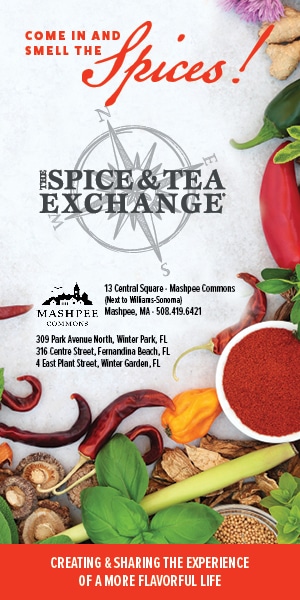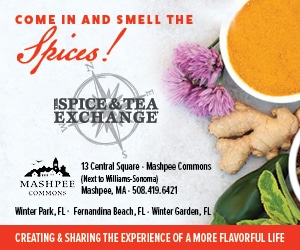
A complementary couple: The distinct styles of folk artists Ralph and Martha Cahoon
Cape Cod Life / November/December 2017 / History, People & Businesses
Writer: Emily Turner
A complementary couple: The distinct styles of folk artists Ralph and Martha Cahoon

Cape Cod Life / November/December 2017 / History, People & Businesses
Writer: Emily Turner

Photo courtesy of the Cahoon Museum of American Art
“Ralph had salt water in his veins, and his artistic language carried history and paid homage to those who lived before him. . . Martha moved to Harwich as a young girl. They were both impacted and inspired by Cape Cod’s beauty and strong sense of place. The Cahoons were very proud to live here.”
Located near the intersection of Main Street and Route 28 in Cotuit, the Cahoon Museum of American Art is named for Ralph and Martha Cahoon, the prolific Cape Cod artists who once lived and worked in this landmark cranberry-colored home. Collectors far and wide—including First Lady Jackie Kennedy—have purchased Cahoon paintings, most of which came out of this one small Cape Cod studio.
Ralph Cahoon’s paintings in particular reflect the Cape, as he enjoyed using recognizable locales for his whimsical paintings. Among the artist’s Cape-based paintings is “Three Sisters, No. Eastham,” with a sailor and one of Cahoon’s trademark mermaids embracing before the trio of wooden lighthouses known as the Three Sisters that once overlooked what is now Nauset Light Beach. Another famed painting is “Shocking Incident on Route 28, Cape Cod,” which depicts sailors in a Cadillac roadster colliding with a carload of mermaids in a 1915 Stutz Bearcat.
Both paintings, owned by private collectors, were among the amazing array of works by Ralph and Martha Cahoon in last summer’s “Coming Home Again” exhibit at the newly-renovated and expanded museum, which also exhibits works by many other artists.
The expansion and renovation of the museum, an 18th century Georgian house that was once the Cahoons’ home and studio, means more room to exhibit works by other artists and the Cahoons as well. Sarah Johnson, director and curator of the Cahoon Museum, says since the expansion, the museum has seen a growth in donations of works by the Cahoons to its collection.
The museum already displays a fascinating collection of Cahoon paintings, including “A View of Hooper’s Landing, Cotuit” and “Megansett Tea Room,” both local scenes, and “Bon Appetit,” in which one of the mermaids preparing food in a busy kitchen looks just like Julia Child. The famed chef knew about the painting, “and she asked that he make her more modest,” Johnson says, which explains the steam wafting from the pot before that mermaid in the painting, obscuring her naked chest.

This Ralph Cahoon painting of a Cape bank scene used local women (left to right) Ruth Ann Andrus, Joyce Howell, Mary LeClair, Judy Shortsleeve and Mary Jo Seguin as models. Collection of Mary LeClair
The Cahoons’ home and studio was built in the late 18th century by Ebenezer Crocker, whose family constructed seven houses in the surrounding area, once known as Crocker’s Corner.
Martha was born in Boston and grew up in Harwich, where she worked as an apprentice to her father, Axel Farham, a Swedish furniture decorator. Furniture decorating was an unusual trade for a woman in the early 19th century, but that did not hinder Martha. She met Ralph, who grew up in Chatham, at a dance in Chatham in 1930, and the pair married two years later. The couple moved to the Crocker house in 1945.
“They had been living in Osterville and bought this house to live in and work in,” Johnson explains, noting, “They had respect for the historic integrity of the structure and allowed it to remain in its original condition.” The house was restored and converted into a museum in the 1980s, and in 2014, it underwent a two-year renovation and expansion that added 3,600 square feet but preserved the building’s historic character.
For years, the Cahoons lived and worked in the Crocker house, eventually shifting their focus from furniture decorating to painting. As seen in the iconic photo on display in the museum of Ralph and Martha seated on opposite sides of the wooden table in their studio, they painted on Masonite—never canvas—because of its similar texture to the wooden furniture they were accustomed to working with. Ralph and Martha painted countless works, many of which were commissioned by local customers.
Ralph’s style is often considered more distinctive than Martha’s, largely due to his iconic mermaids. It was in the Crocker house that Ralph began to focus on the mermaids that became a trademark of his work, according to Johnson.

Sarah Johnson, director and curator of the Cahoon Museum of American Art in Cotuit, in the room that was once the studio of artists Ralph and Martha Cahoon. Photo by Deb Boucher Stetson
Ralph’s flamboyant paintings are balanced by Martha’s more subdued work. Martha painted many bucolic country scenes that depict people going about their everyday activities. “Martha’s palette was different from Ralph’s—softer and less high-keyed,” Johnson says, “and she responded to different influences and themes in art than her husband. In her later years, her work had a sweet and sentimental sense, almost childlike.” Martha also created many beautiful still lifes, a technique she picked up in her father’s workshop.
After Ralph’s death in 1982, Martha lived in an apartment attached to the Cahoon Museum up until she passed away in 1999. Legend has it that now and then Martha would wander into the museum, and talk with visitors who had no idea she was the artist.
Today, Ralph and Martha’s paintings are coveted by collectors who admire the artists’ connection to Cape Cod. Benton Jones, a prominent collector of the Cahoons’ artwork, praises the way “their work represents in exquisite folk art and in a whimsical way what the Cape is all about.” In the same vein, Johnson says that even when the location of a Cahoon painting is not immediately recognizable, both Ralph and Martha “used the sense of place here on Cape Cod in all their paintings.”
“Ralph had salt water in his veins, and his artistic language carried history and paid homage to those who lived before him,” Johnson says. “Martha moved to Harwich as a young girl. They were both impacted and inspired by Cape Cod’s beauty and strong sense of place. The Cahoons were very proud to live here.”
Selections of Ralph and Martha’s work, as well as more information about the Cahoons, can be found at the Cahoon Museum of American Art, 4676 Falmouth Road, Cotuit.













